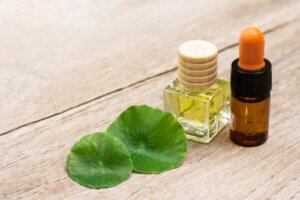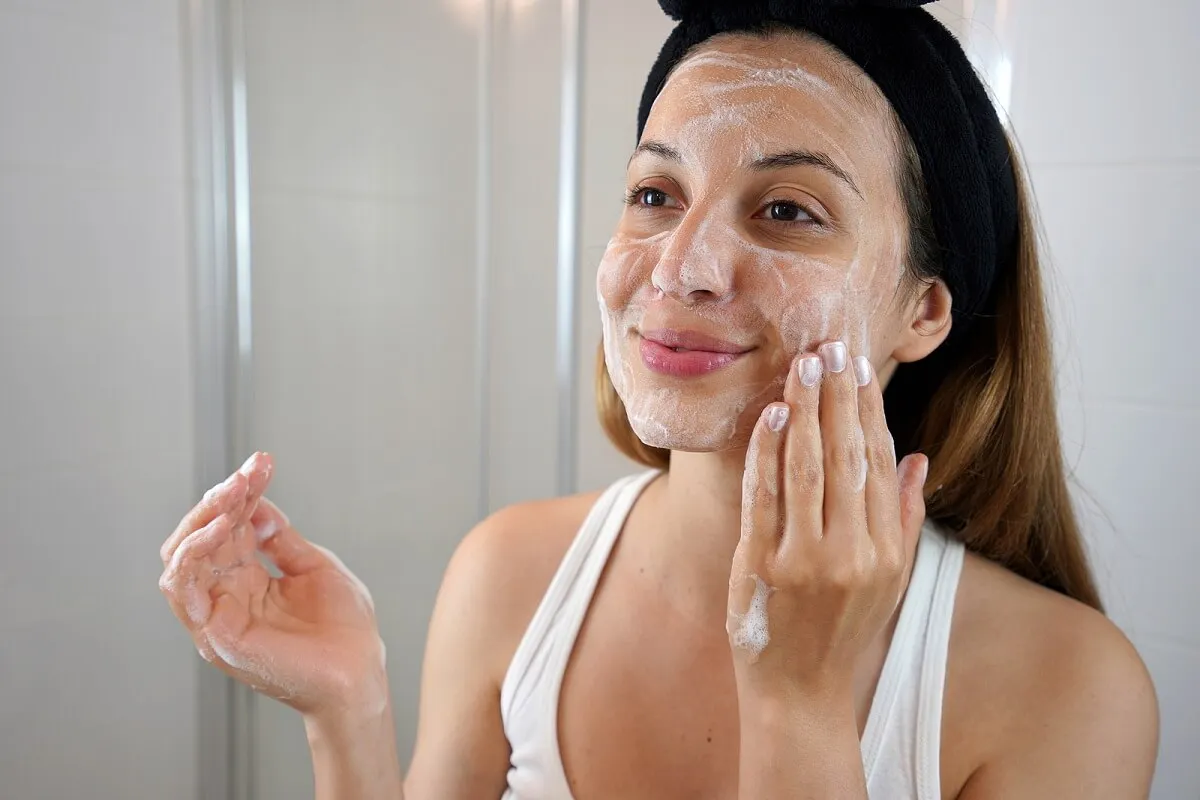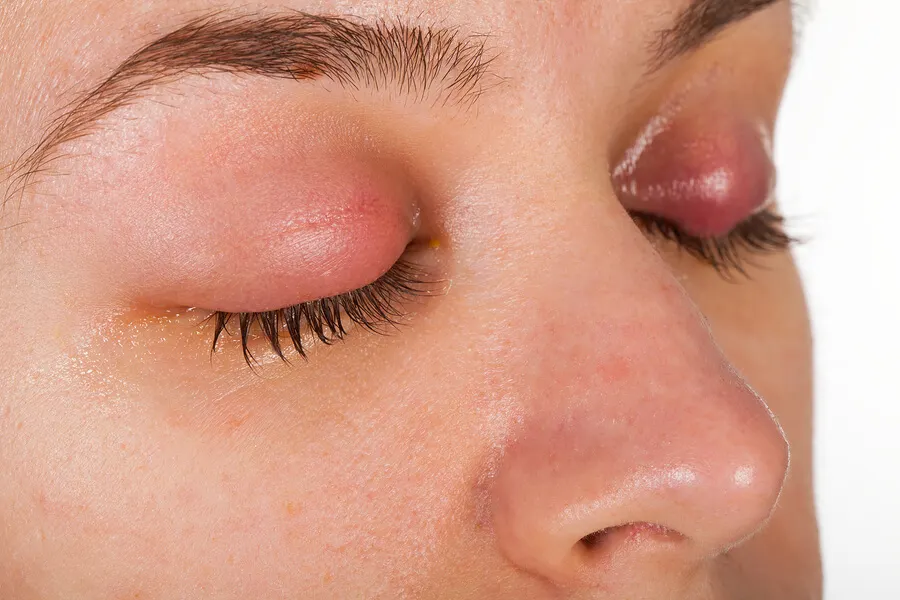Why Is Centella Asiatica Good for the Skin?

Centella asiatica, commonly known as Gotu kola, is a common ingredient in cosmetics. Although its use dates back to millenary times, the pharmaceutical and beauty industries have expanded the properties attributed to the plant, opening the way for it to be used in skin-friendly routines.
This herb belonging to the Apiaceae family, native to Asia, has an excellent reputation as an anti-aging remedy, according to a publication (link in Spanish) by the University of Texas Herbal Safety department.
Gotu kola, kodavan, Indian pennywort, and Asiatic pennywort are additional names for a plant that promises positive effects when combating different skin conditions. Let’s pick out the truth from the myths.
What is Centella asiatica and what are its properties?
Centella asiatica is a plant with green leaves and pink and white flowers. It grows in humid soils. It is a multifaceted herb, as you can try it in a salad, drink it in syrup, use it in a soap or spread it as a lotion.
Centella asiatica, or Gotu kola, is a key component in the treatment of small wounds, psoriasis, burns and keloids. The journal Advances in Dermatology and Allergy adds that it’s also useful in addressing other conditions in almost all skin types.
Such qualities come from its content in vitamins A, B1, B2, B3, and C. It’s rich in quercetin, essential oils, astragalin, phytosterols and flavonoids.
It contains asiaticoside, madecassoside, terminoloside, and fatty acids. It also contains mucilages, resins, alkaloids, saponins, and free amino acids.
Depending on the geographical region, the chemical composition of centella asiatica varies.
Benefits of Centella asiatica for the skin
Traditional medicine, such as Ayurveda and cosmetology, state the topical power of the oriental plant. The following effects are associated with this herb.
Read more here: The Health Benefits of an Ayurvedic Diet
Moisturizing
Creams with 5% concentrations of Gotu kola keep the skin moisturized. This is how the Asian herb promotes skin hydration, and nourishes, soothes and softens.

Healing
The plant inhibits the inflammation of scars. It’s a stimulant of epithelization that intervenes in the activation of skin fibroblasts. Hence its use to help fade or minimize the appearance of surgical wounds, burns, and sunburn.
Antioxidant
Centella asiatica protects cells from free radicals, which is advantageous for sensitive skin. This particularity accelerates cell regeneration, especially in aged dermis or skin exposed to severe environmental conditions.
Prevention of wrinkles and spots
One of the most praised virtues of the species is the improvement of blood flow, which brings more nutrients and oxygen to the cells. It prevents the formation of spots, delays the appearance of wrinkles, and boosts collagen synthesis.
It isn’t surprising that it’s considered a trendy ingredient in anti-aging cosmetics, as pointed out in an article published by the U.S. National Library of Medicine.
Read more here: 5 Natural Remedies to Remove Neck Wrinkles
Vasoconstrictor
By influencing blood circulation, Gotu kola acts as a vasoconstrictor. Therefore, it tones the veins and helps to prevent venous insufficiency.
Combats cellulite
The Spanish Academy of Dermatology and Venereology (link in Spanish) mentions Centella asiatica as one of the substances that work on the connective tissue to eliminate cellulite. This herb helps elasticity and firmness, so that stretch marks don’t appear either.
Reduces inflammation in the eyelids
In sensitive parts of the body, such as the eyelids, this oriental plant is good for reducing inflammation. Dermatological wipes impregnated with it are a useful option in case of blepharitis, according to the bulletin Información Terapéutica del Sistema Nacional de Salud de España.

Antibacterial and antifungal
Products containing this plant work as bactericides and fungicides. They’re optimal for acne-prone skin and skin with fungal infections.
Skin products containing Centella asiatica
Due to its properties, the Apiaceae herb is a valuable active ingredient in cosmetics and can be found in sunscreens, leg relaxers, tonics, body toners, and shampoos for sensitive scalps, among other products.
Depending on the use and purpose, we can highlight the following:
- Cream formulas moisturize deeply to increase the skin’s resistance and restore its barrier capacity.
- Serums penetrate the innermost layers to restore natural elasticity and firmness to the tissues.
- In the case of oils, they’re quick to heal wounds and restore freshness to dry dermis.
Find out more here: The Top 5 Home Remedies to Soothe Irritated Skin
Are there any risks in the topical application of Centella asiatica?
The frequent way to use Gotu kola on the skin is through cosmetics, creams, and ointments. Regardless of whether it’s a medical case or for an aesthetic treatment, respect the specialist’s prescription without overdoing it.
Research reported by Offarm magazine highlights that topical use is well tolerated and that hypersensitivity is rarely reported. However, it’s advisable to use it with caution so that there aren’t any complications.
All cited sources were thoroughly reviewed by our team to ensure their quality, reliability, currency, and validity. The bibliography of this article was considered reliable and of academic or scientific accuracy.
- Alonso M José. Centella asiática. Una planta con historia e interesantes propiedades. Offarm. Vol. 28. Núm. 5. España; 2009. https://www.elsevier.es/es-revista-offarm-4-articulo-centella-asiatica-una-planta-con-13139754
- Barberá Loustaunau E, Vázquez Castro F. Tratamientos tópicos oculares: revisión. Información terapéutica. Vol. 33. Núm. 3. Sistema Nacional de Salud. España; 2009. https://www.sanidad.gob.es/biblioPublic/publicaciones/recursos_propios/infMedic/docs/vol33_3TratTopOculares.pdf
- Brzezińska M, Bylka W, Studzińska-Sroka E, Znajdek-Awizeń P. Centella asiática en cosmetología. Avances en dermatología y alergias. Polonia; 2013. https://www.mendeley.com/catalogue/1e8c0e96-4dd9-3098-b83a-ed1ec7a0a9f0/?utm_source=desktop&utm_medium=1.19.4&utm_campaign=open_catalog&userDocumentId=%7B61d712f9-ac03-4d10-83f1-5dec369c526c%7D
- González Stuart A. Gotu Kola. Herbal Safety. The University of Texas at El Paso. Estados Unidos. https://www.utep.edu/herbal-safety/hechos-herbarios/hojas-de-datos-a-base-de-hierbas/gotu-kola.htm
- Paramesh R, Sharma Datta H. Tendencias en envejecimiento y cuidados de la piel: conceptos ayurvédicos. Journal of Ayurveda and Integrative Medicine. Vol. 1. Núm. 2. pp. 110-113. National Library of Medicine. Estados Unidos; 2010. https://www.ncbi.nlm.nih.gov/pmc/articles/PMC3151377/
- Roo E. Celulitis, lo último para combatirla. Academia Española de Dermatología y Venereología. España; 2009. https://aedv.es/comunicacion/notas-de-prensa/celulitis-lo-ultimo-para-combatirla/
This text is provided for informational purposes only and does not replace consultation with a professional. If in doubt, consult your specialist.








